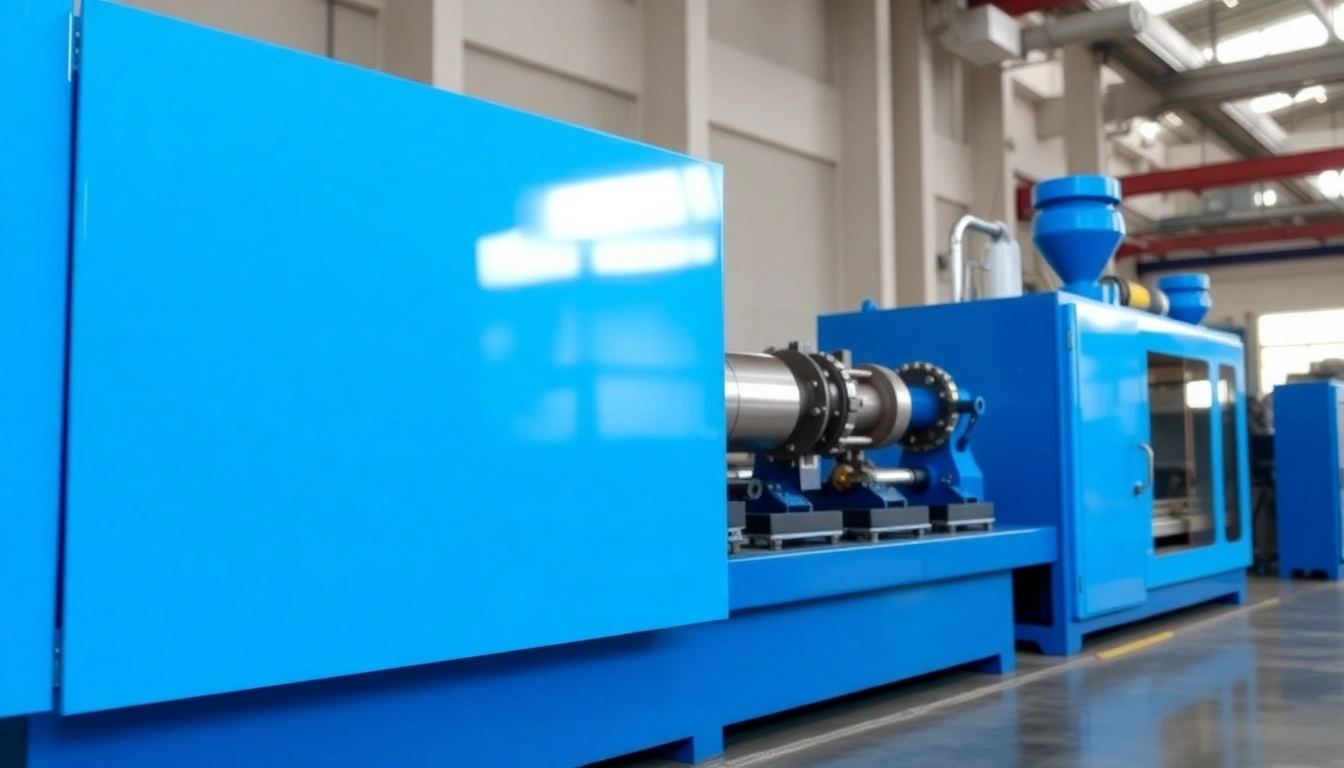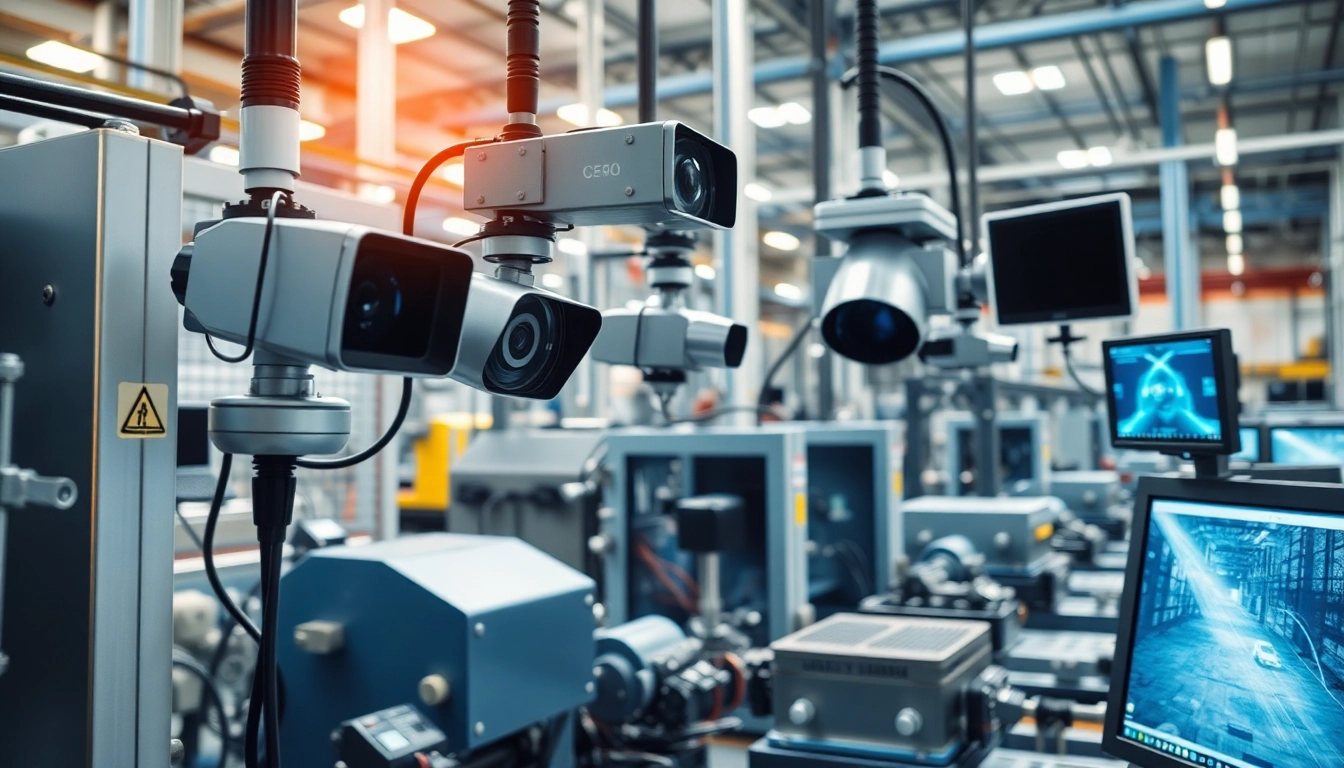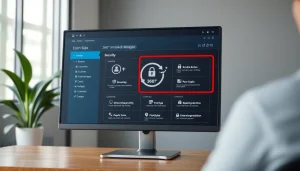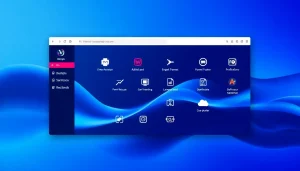Blow Molding Machine: Meningkatkan Efisiensi dalam Produksi Plastik
Introduction to Blow Molding Machines
In an era where efficiency in manufacturing is paramount, the Blow Molding Machine stands out as a vital player in the production of hollow plastic components. Blow molding technology allows for the economical production of parts that are lightweight yet strong, making it essential in various industries ranging from packaging to automotive. This article delves into the intricacies of blow molding machines, exploring their types, operational processes, advantages, and future trends, providing a comprehensive look at this revolutionary manufacturing technology.
What is Blow Molding?
Blow molding is a manufacturing process specifically designed for creating hollow plastic parts. This technique involves several steps wherein a plastic preform or parison is shaped through the use of air pressure. The process is efficient, allowing for rapid production rates and the creation of complex geometries that would be otherwise difficult to achieve with traditional methods.
History and Development of Technology
The origins of blow molding date back to the 1930s when it was first utilized for producing glass bottles. Over the decades, advancements in technology have transitioned the process toward plastic components, particularly with the advent of materials such as polyethylene and polypropylene. In the 1970s, manufacturers started adopting automatic blow molding machines, which greatly enhanced production capabilities and precision.
Benefits of Using Blow Molding Machines
Blow molding machines offer several advantages, making them indispensable in modern manufacturing. These benefits include:
- High Efficiency: The ability to produce large quantities of products quickly.
- Material Versatility: Handling a variety of plastic materials, allowing for flexibility in production.
- Cost-Effectiveness: Reduction in material waste through precise mold design.
- Lightweight Products: Creating lightweight yet durable items ideal for packaging.
- Complex Shapes: Capability to produce intricate designs that would complicate other manufacturing processes.
Types of Blow Molding Machines
Understanding the different types of blow molding machines is crucial for manufacturers aiming to select the most suitable option for their production needs. The main types include:
Extrusion Blow Molding (EBM)
Extrusion blow molding is a popular method for creating hollow plastic parts. This process begins with melting plastic granules, which are extruded into a parison. The parison is then clamped within a mold, and air is blown into it, causing the plastic to expand and conform to the mold’s shape. EBM is used extensively to manufacture bottles, containers, and complex shapes.
Key benefits of EBM include:
- High production rates for simple shaped objects.
- Ability to incorporate diverse materials.
- Cost-efficient for large-scale productions.
Injection Blow Molding (IBM)
Injection blow molding combines injection and blow molding techniques. In this method, a preform is molded through injection before being transferred to a blow-molding machine. The preform is heated and then inflated in a separate mold.
This technique is particularly useful for producing high-precision components such as bottles with thick walls. Advantages of IBM include:
- Better control over wall thickness and tolerances.
- Lower material consumption for small parts.
- Allows for production of small batches efficiently.
Injection Stretch Blow Molding (ISBM)
Injection stretch blow molding adds a stretch phase to the IBM process, which optimizes molecular orientation and enhances the strength of the final product. It is commonly utilized in the beverage industry, particularly for manufacturing PET bottles.
The benefits of ISBM include:
- Improved clarity and physical properties of the finished product.
- Greater energy efficiency through less material use.
- Enhanced recyclability of final products.
Operational Process of Blow Molding Machines
The operational process of blow molding involves several critical steps that ensure the effective production of hollow plastic parts. Below, we break down these steps for a clearer understanding.
Steps in the Blow Molding Process
- Material Selection: Choose the appropriate type of plastic based on the product specifications.
- Heating: The plastic resin is heated until it reaches a molten state.
- Molding: The molten plastic is formed into a parison or preform.
- Blowing: Air is blown into the parison or preform, expanding it to fill the mold.
- Cooling: The formed part is allowed to cool and solidify within the mold.
- Ejection: Once cooled, the part is ejected from the mold.
- Trimming: Any excess material is trimmed from the finished product.
Preparation and Raw Materials
To ensure optimal performance and product quality, preparation involves careful selection and preprocessing of raw materials. Plastics like polyethylene, polypropylene, and PVC are commonly used, each offering distinct properties suitable for different applications. Additionally, additives are utilized to enhance the physical characteristics of the plastic, such as UV resistance, impact strength, and color.
Troubleshooting Common Issues
Despite advanced technology, certain issues may arise during the blow molding process. Common challenges include:
- Inconsistent Wall Thickness: This can be addressed by adjusting the parison’s extrusion speed and mold temperature.
- Bubbles or Voids: Ensuring proper mixing of the resin and additives can mitigate this issue.
- Cool Down Problems: Adjusting cooling times and methods can help achieve the desired cooling rates.
Advantages and Disadvantages of Blow Molding Machines
While blow molding machines offer significant benefits, they also present several challenges. Below is an overview of the main advantages and disadvantages.
Advantages in Production Scale
Blow molding machines are particularly praised for their capability to produce large volumes of hollow plastic products efficiently. The high-speed operation significantly reduces manufacturing costs per unit, ultimately increasing profitability. Additionally, the ease of automation in blow molding processes allows manufacturers to scale production according to market demand without significant downtime.
Disadvantages and Challenges Faced
Challenges associated with blow molding include:
- Initial Investment Costs: Setting up blow molding systems can require a substantial capital outlay.
- Material Limitations: Not all plastics are suitable for blow molding, which can limit product design options.
- Complex Machinery Maintenance: Regular maintenance is vital to prevent breakdowns and production halts.
Comparison with Other Production Methods
When compared with other plastic manufacturing methods such as injection molding, blow molding stands out for its specific application in producing hollow shapes. Injection molding is better suited for solid parts and offers detailed design capabilities, but blow molding typically has faster production cycles for hollow components. In contrast, rotational molding is advantageous for larger items but lacks the speed of blow molding.
The Future of Blow Molding Technology
As the demand for sustainable and cost-effective manufacturing practices grows, blow molding technology is evolving to meet these challenges. Here’s a look at expected innovations and trends in this field.
Latest Innovations and Trends
Recent advancements in blow molding technology have focused on improving energy efficiency and material usage. The introduction of electric blow molding machines has minimized energy consumption significantly while enhancing precision. Additionally, smart technologies, such as IoT integration, enable better monitoring and predictive maintenance, which help in reducing downtime and operational costs.
Environmental Impact and Sustainable Solutions
As environmental concerns gain precedence, the blow molding industry is actively seeking sustainable solutions. Many manufacturers are now using recycled materials in the production process and designing products with recyclability in mind. Sustainable manufacturing practices not only comply with regulations but also appeal to eco-conscious consumers, making it a competitive advantage.
Market Opportunities for Manufacturing Companies
The future landscape of the blow molding industry is promising, with opportunities in various sectors such as cosmetics, food, and beverage packaging. Companies adapting to new technologies and sustainable practices are likely to capture burgeoning markets that prioritize efficiency and environmental responsibility. Furthermore, expanding markets in developing countries present lucrative opportunities for growth.














Post Comment